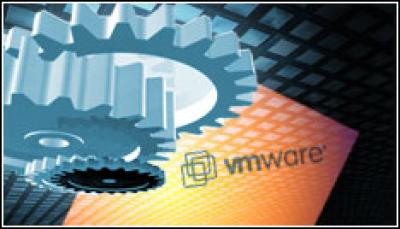VMware Workstation 7.1 Stays A Step Ahead: Review

VMware Workstation continues to lead desktop virtualisation, despite increasing competiton from Oracle’s VM VirtualBox
VMware Workstation is the undisputed leader in desktop virtualisation tools. With its shear breadth of guest operating system support, graphics display power, intimate support of Windows 7 and proficient use of the latest hardware developments to maximise virtual machine support, it continues to set the pace for this product category.
For IT managers who are working in high-volume test-and-development environments—with virtual machine playback, fully developed management tools and access to VMware’s ACE (Assured Computing Environment)—VMware Workstation is still the best choice. However, the workstation also carries a large price tag: At £165.35 per user, the license costs are much higher than the enterprise license for Oracle VM VirtualBox.
But the initial license fees (or lack thereof) don’t tell the whole story.
VMware Workstation 7.1
I tested VMware Workstation 7.1 on a Lenovo W510 mobile workstation equipped with an Intel Core i7 quad-core processor with 8GB of RAM. The physical host system was running Windows 7 Professional 64-bit with the latest patches.
I was able to install and run Autodesk’s AutoCAD 2011 in a virtual machine that was running Windows 7 Professional with one virtual quad-core processor. Autodesk support engineers advised me that tricking out my virtual CPU with the maximum available on my system wouldn’t get me that much more in terms of performance, since AutoCAD 2011 is constrained primarily by the GPU. In this case, my Lenovo system was equipped with a relatively powerful NVIDIA Quadro FX 880M GPU. (This is the first version of Workstation to be supported and recommended by Autodesk.)
AutoCAD projects with which I worked during my tests were displayed quickly, with nearly the same performance as when I used AutoCAD on my Lenovo system directly. There was some hesitation rotating images when other virtual machines were running background workloads (in this case, Futuremark’s PCMark Vantage performance benchmarking suites). Workstation 7.1 supports OpenGL 2.1 in Windows 7 VMs and provided relatively smooth video playback using PCMark test video.
More power
In keeping with VMware’s finely detailed approach to implementing VMs, Workstation 7.1 enabled me to create powerful systems that could use either eight processors or eight cores. This was useful to me not only in creating more computing power, but also in allocating that power in a way that would help me avoid unnecessary license fees for applications that are priced by processor or by core.
Other detail improvements have to do with eliminating the hassle associated with starting up virtual machines or applications associated with VMs. In this version of Workstation, I was able to turn on autologon. This saved my credentials and bypassed the log-in dialog box when I powered on a Windows guest system. Autologon is a convenience feature that may give security managers hives, but for IT test and development pros, it’s a real time-saving enhancement.
A similar enhancement was extended to applications running in a virtual machine. I was able to start the Windows guest and drag the AutoCAD 2011 application from the Unity start menu (Unity is a long-standing feature that enables the virtual machine to appear as if it is the only system running on the physical host) directly to the physical host desktop. I was then able to double-click the shortcut to open AutoCAD. The shortcut remained on the desktop after I exited Unity mode and closed VMware Workstation.